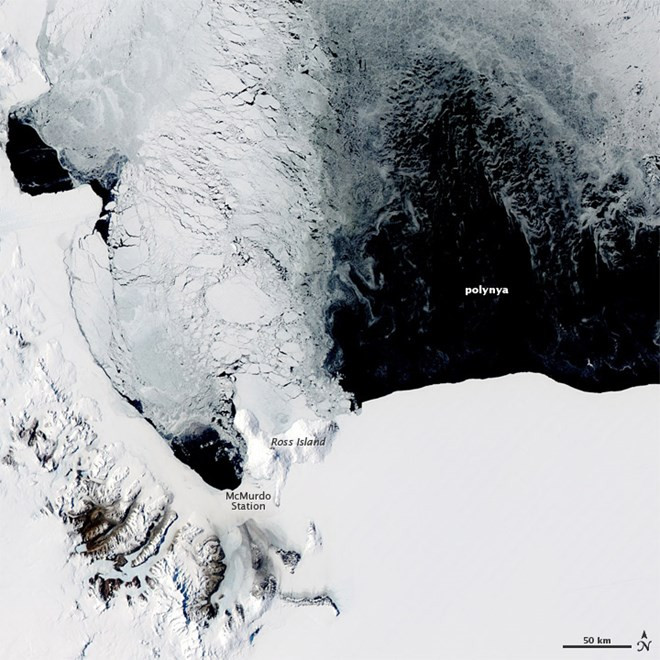Scientists split about the huge gap that appeared in Antarctica
A gap of about 40,000 square kilometers, formed in the middle of Antarctica, in the winter of Australia (from July to August), is attracting the attention of many scientists and experts on research. climate in the world. The opinion of the scientific community is quite divided on this phenomenon, once known in 1974.
This circular hole is at least 40,000 square kilometers (equivalent to Switzerland or equal to one-eighth of Vietnam's total area), even some news agencies believe that this hole has an area of up to 80,000 square kilometers. , was discovered last month by satellite images. According to the Swiss daily newspaper Le Temps, the hole is located in the Weddell Sea , northwestern Antarctica.

Huge gap.
While some research institutes directly linked this phenomenon to global warming, climate expert Heinz Wanner, founder of the Oeschger Climate Change Research Center in Berne (Switzerland), affirmed. , "for the climate research industry, such causal connections are difficult to identify." The scientist also argues that more research is needed to confirm the link between this phenomenon in Antarctica and global warming.
For many scientists, this flaw called 'polynie' (in French) is an ice area or a very thin ice layer between the large ice mass. The cause of this hole has not been clearly explained, possibly due to the impact of ocean currents, strong wind pressure or the thickness of the ice. According to the founder of the Oeschger Center for Climate Change Research, "in the case of the Weddell Sea hole , this is definitely the melting of the ice mainly due to the increase in hot water under the ice. A sea current. Saving upwards movement has melted the ice from below. "
Scientists used to know the 'polynie' phenomenon but rarely did it reach such a large scale, especially offshore. A similar phenomenon was known to occur in 1974, also in this area. The gap was 300,000 square kilometers, disappeared 40 years later, before it reappeared last year for a few weeks, then returned again this year, significantly larger than the loss. vulnerability appeared last year.
According to scientists who are studying this phenomenon, it is still too early to attribute this phenomenon to global warming. On the contrary, melting ice definitely affects the temperature of the water and therefore, at least affects the climate in that area. In any case, the relationship between 'polynie' and climate change is still the focus of debates about this phenomenon, both in the scientific world and on social networks.
- The one trillion tons of ice has separated from Antarctica
- New cracks appear after the trillions of ice caps have just split off from Antarctica
- Do people with brains split apart, are their souls divided into two different halves?
- Antarctic glacier is thinning with alarming speed
- The appearance of huge fissures, evidence of Africa began to split into two, forming a new continent
- Normal jobs become extremely difficult in Antarctica
- Huge pool of sediments beneath the world's most mysterious continent
- The penguin species has appeared 20 million years ago
- New discovery about the existence of Antarctic penguins
- Ice melt record in Antarctica
- Antarctica is warming up
- The sky is like a split in twilight in Canada
 'Fine laughs' - Scary and painful torture in ancient times
'Fine laughs' - Scary and painful torture in ancient times The sequence of numbers 142857 of the Egyptian pyramids is known as the strangest number in the world - Why?
The sequence of numbers 142857 of the Egyptian pyramids is known as the strangest number in the world - Why? History of the iron
History of the iron What is alum?
What is alum?